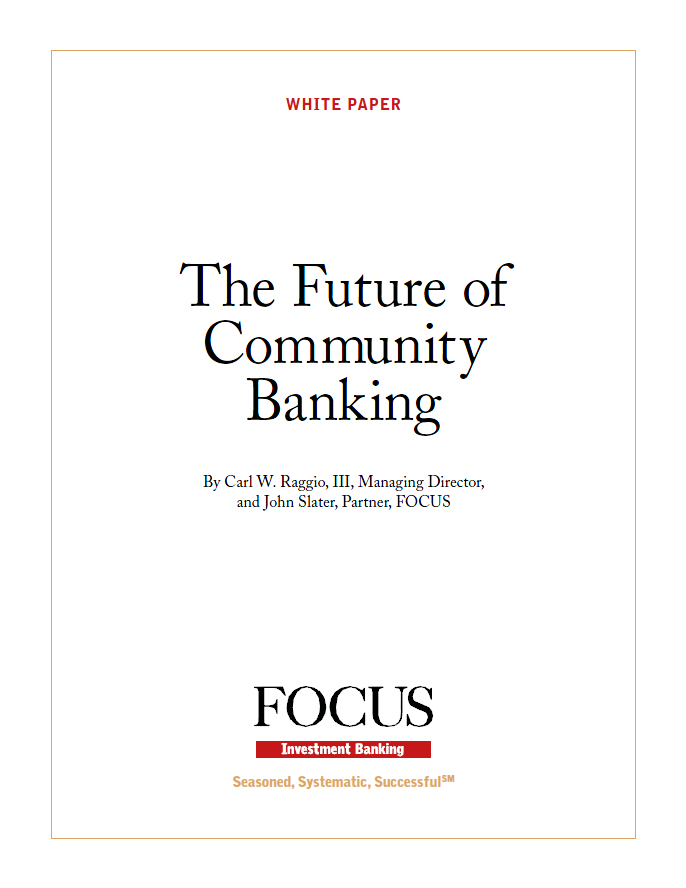
Download the FOCUS white paper “The Future of Community Banking”

Why is this typical of the future?
Over the next three to five years, this type of transaction is projected to become a common trend with a Wall Street analyst estimating that some 20 to 30 percent of banks will be merged during the period—for the following reasons:
First, to be profitable, the constant pressure to maintain high regulatory capital ratios requires banks to reach certain efficiency ratios sooner rather than later,
Second, for all banks, access to capital is limited at best. Hence, there will be a “survival of the fittest” banking industry environment with each bank striving to be the dominant bank in its market(s),
Third, to be competitive and sufficiently profitable in order to maintain market position, community banks must achieve a minimum asset size of around $1 billion.
Oops! We could not locate your form.













